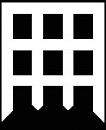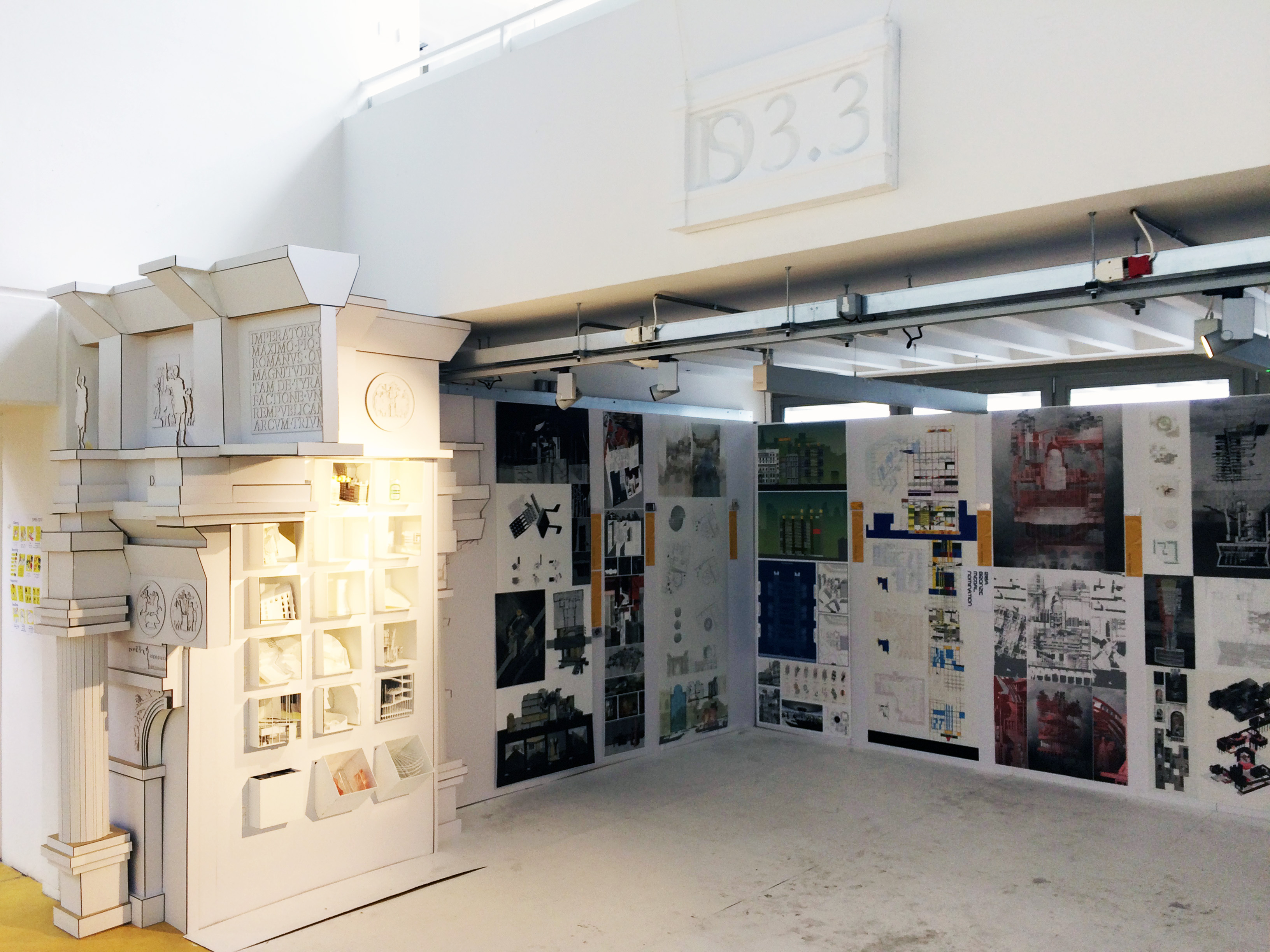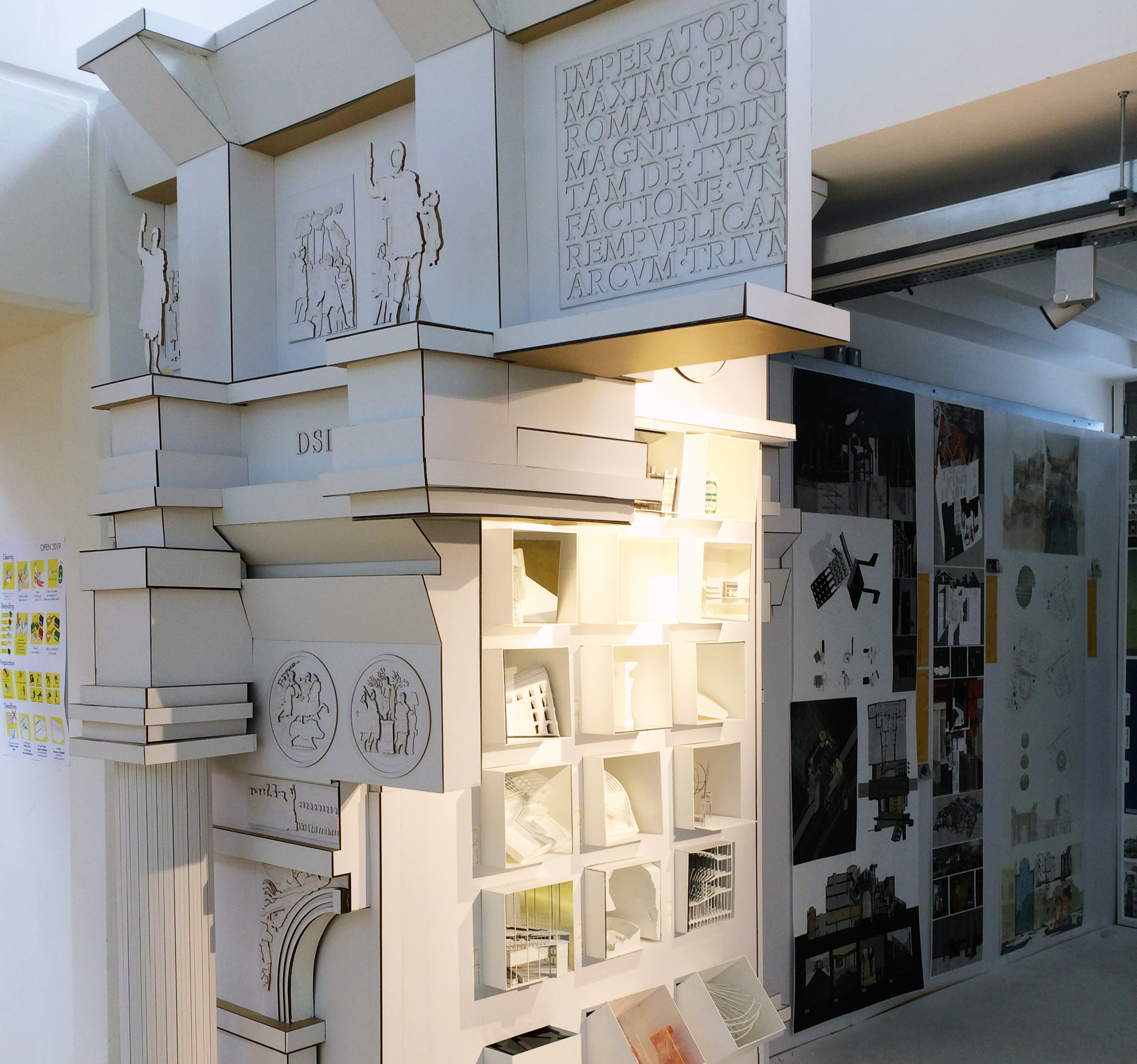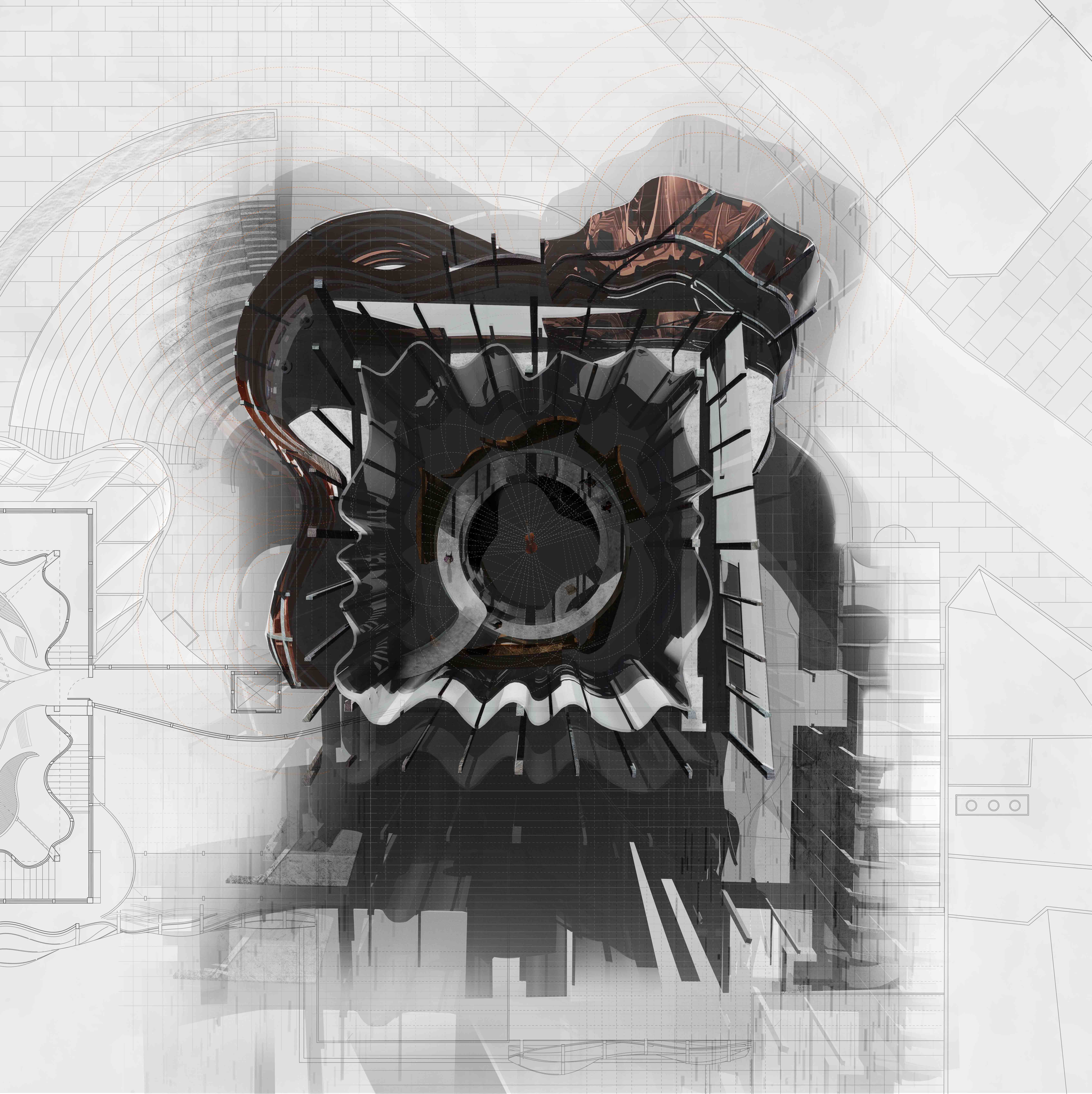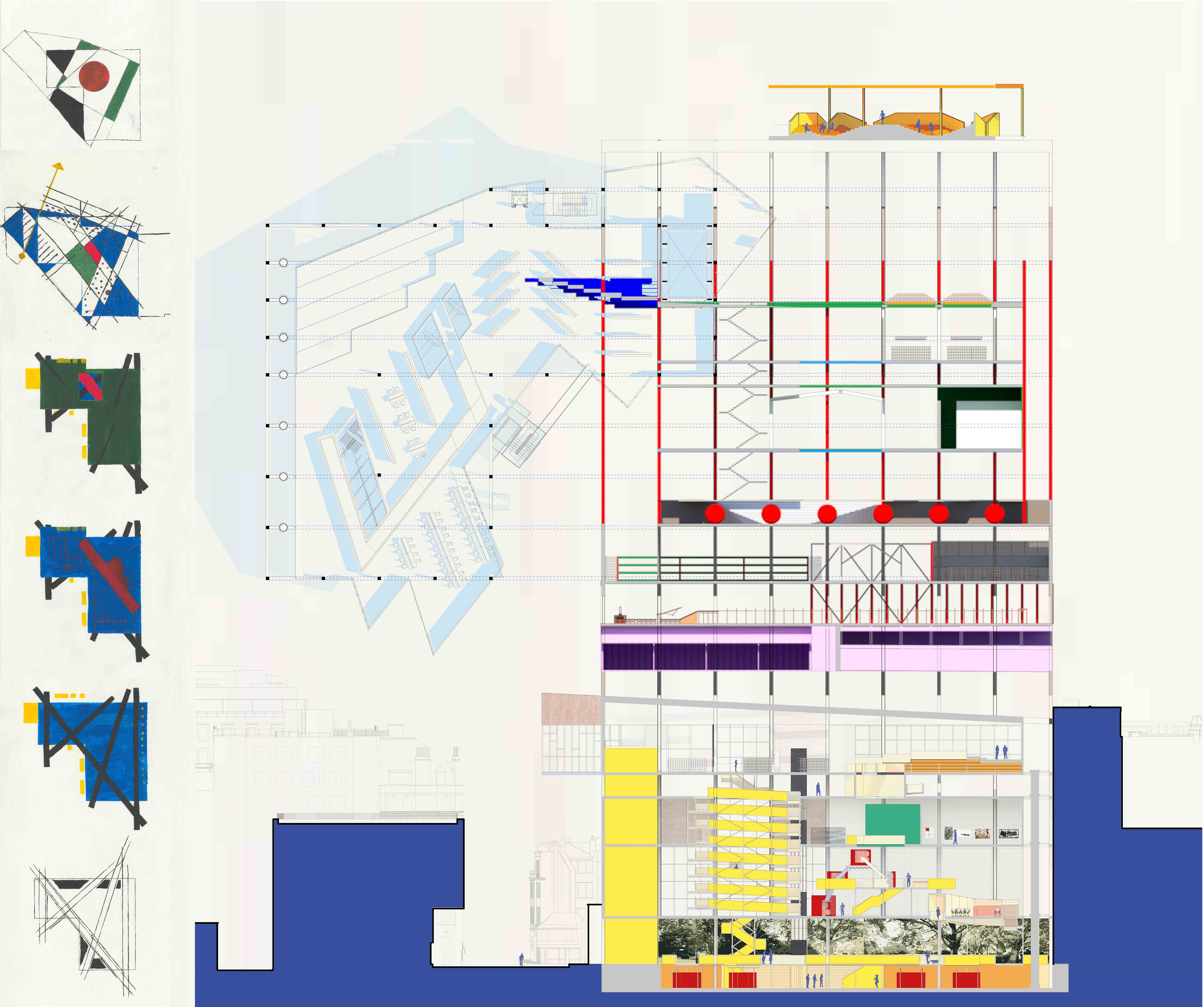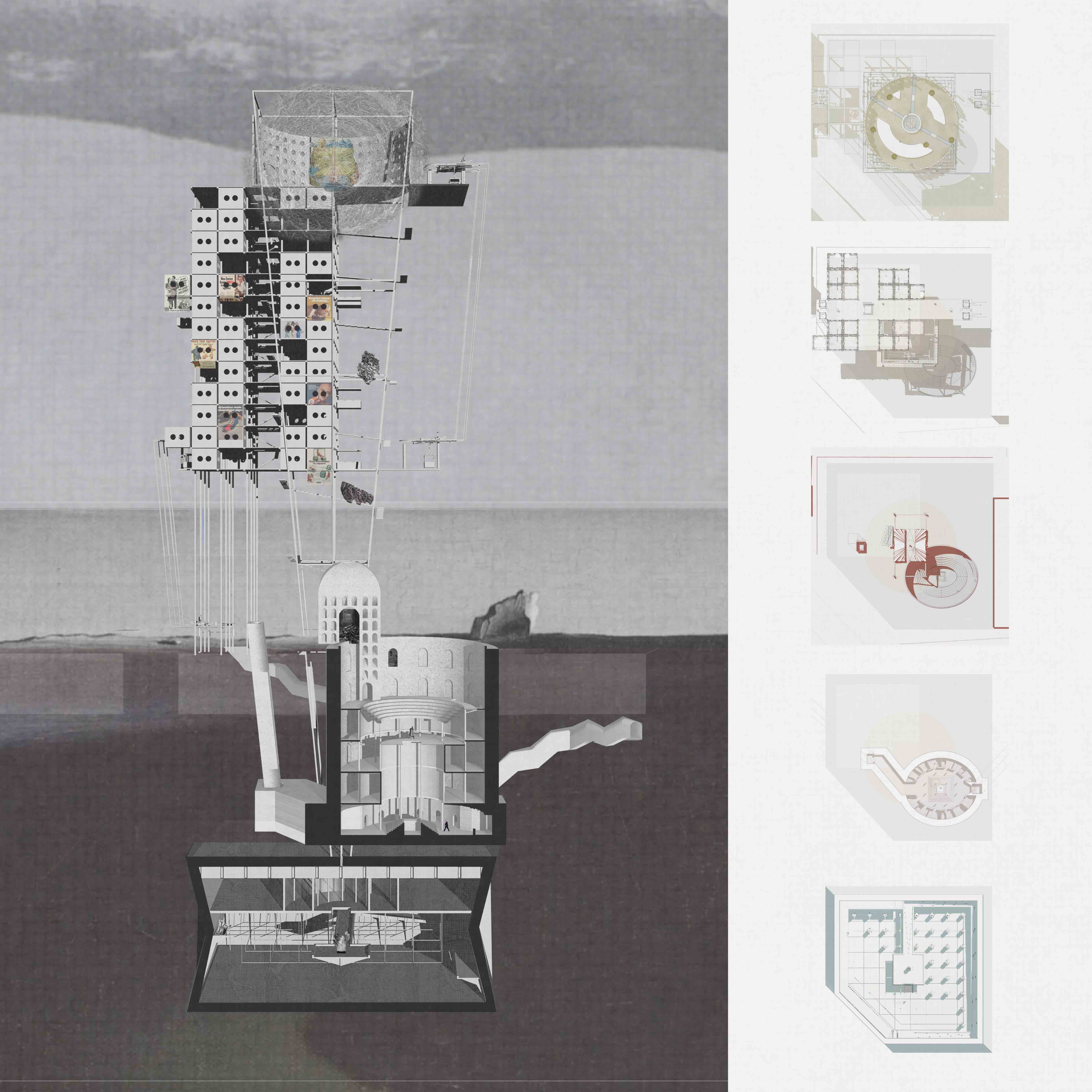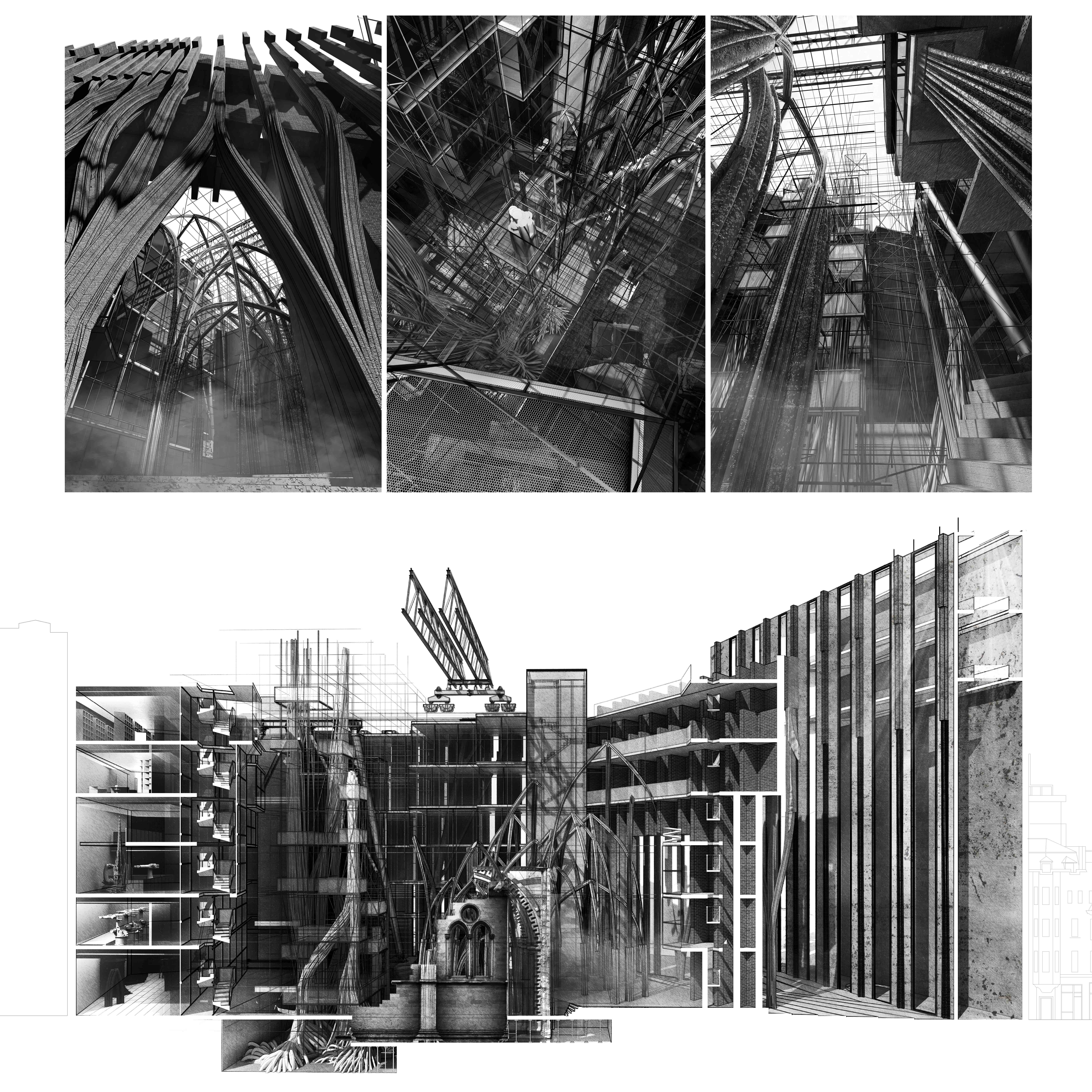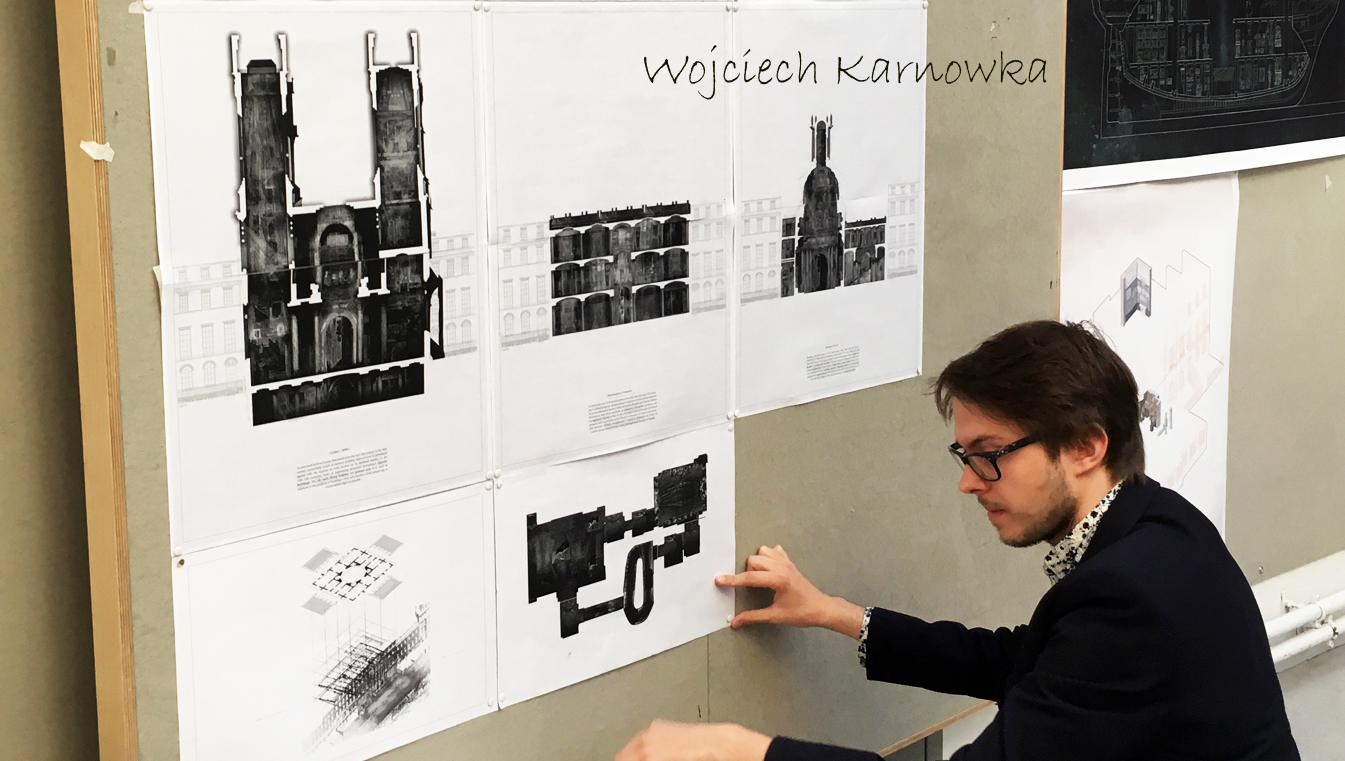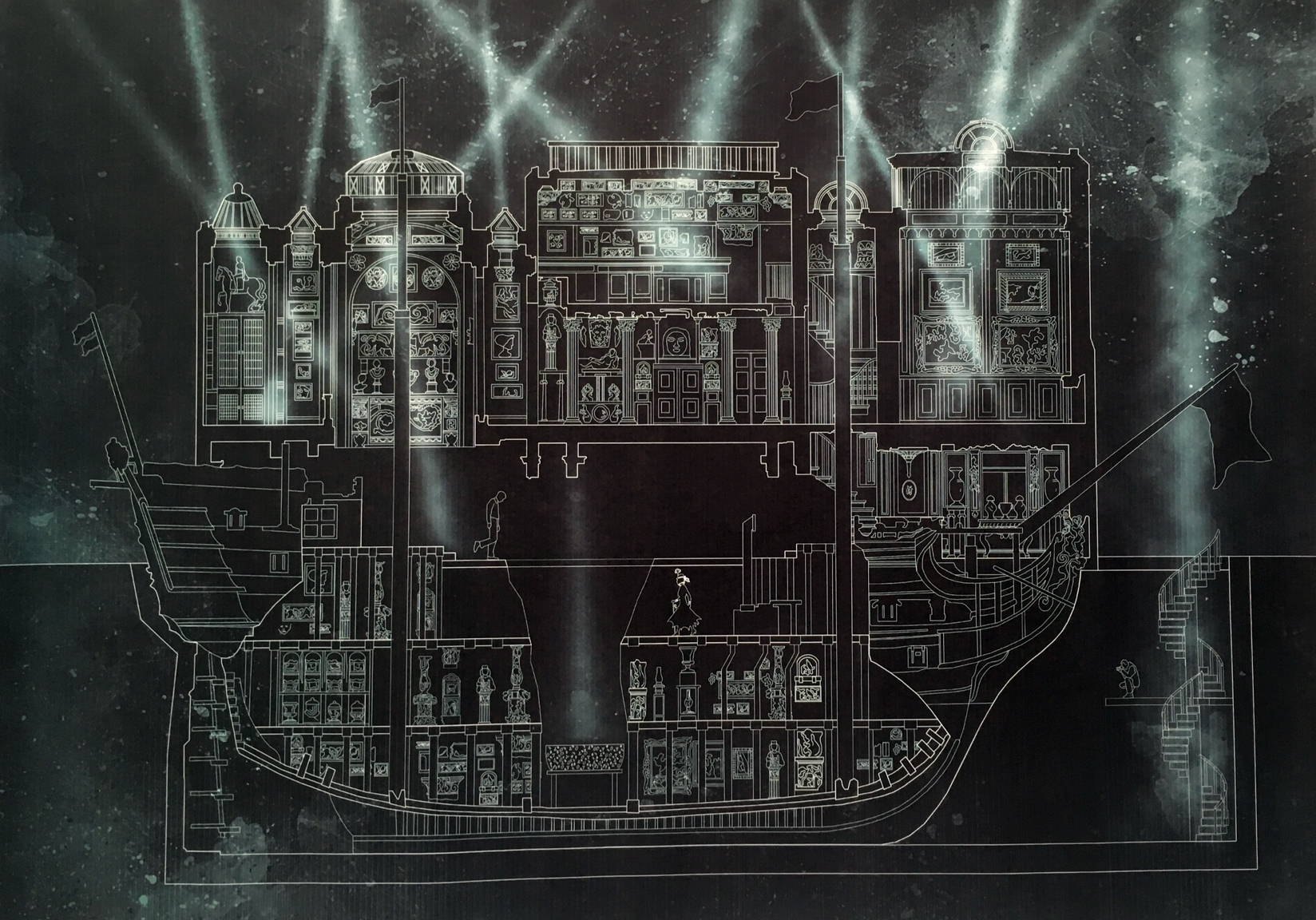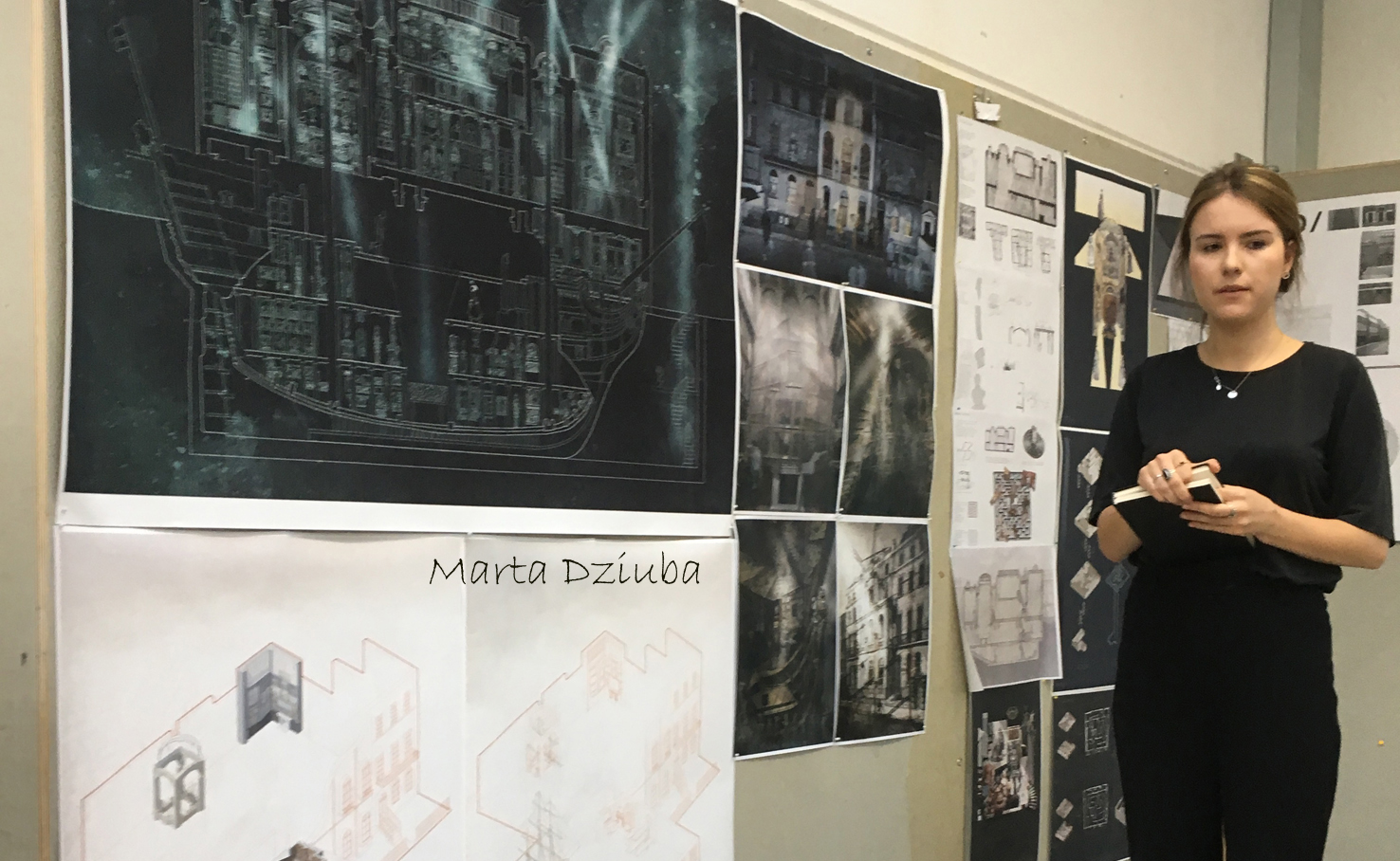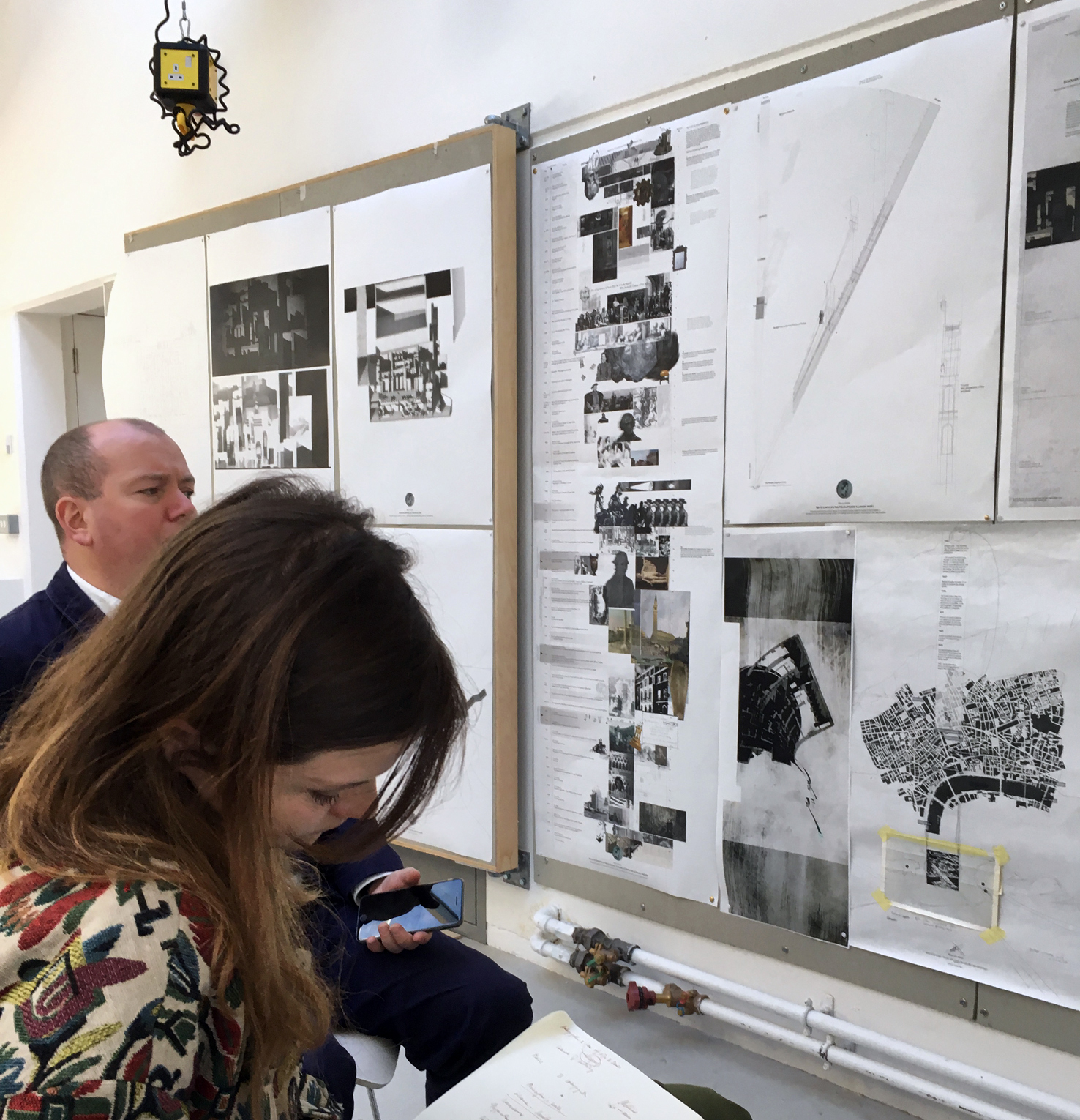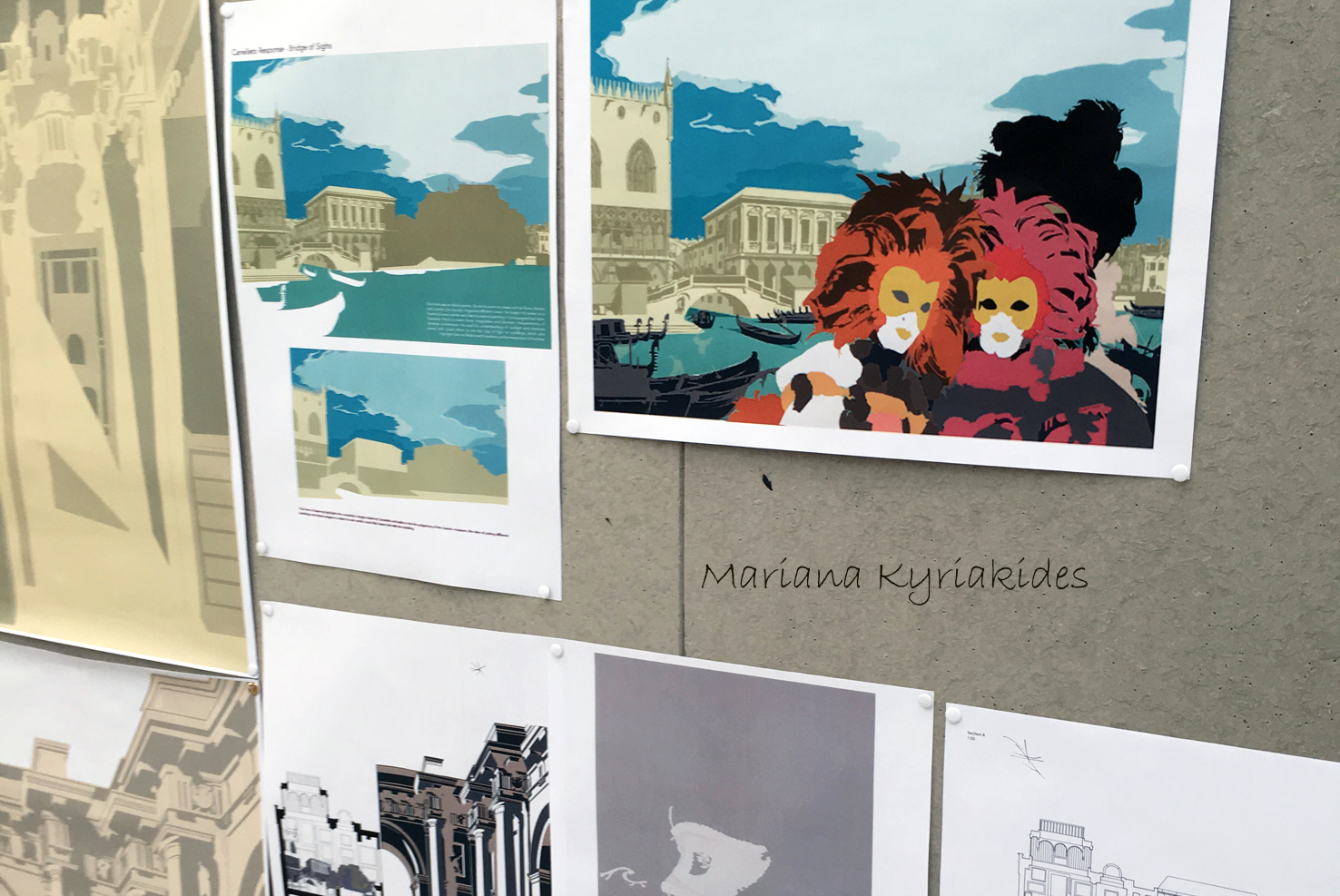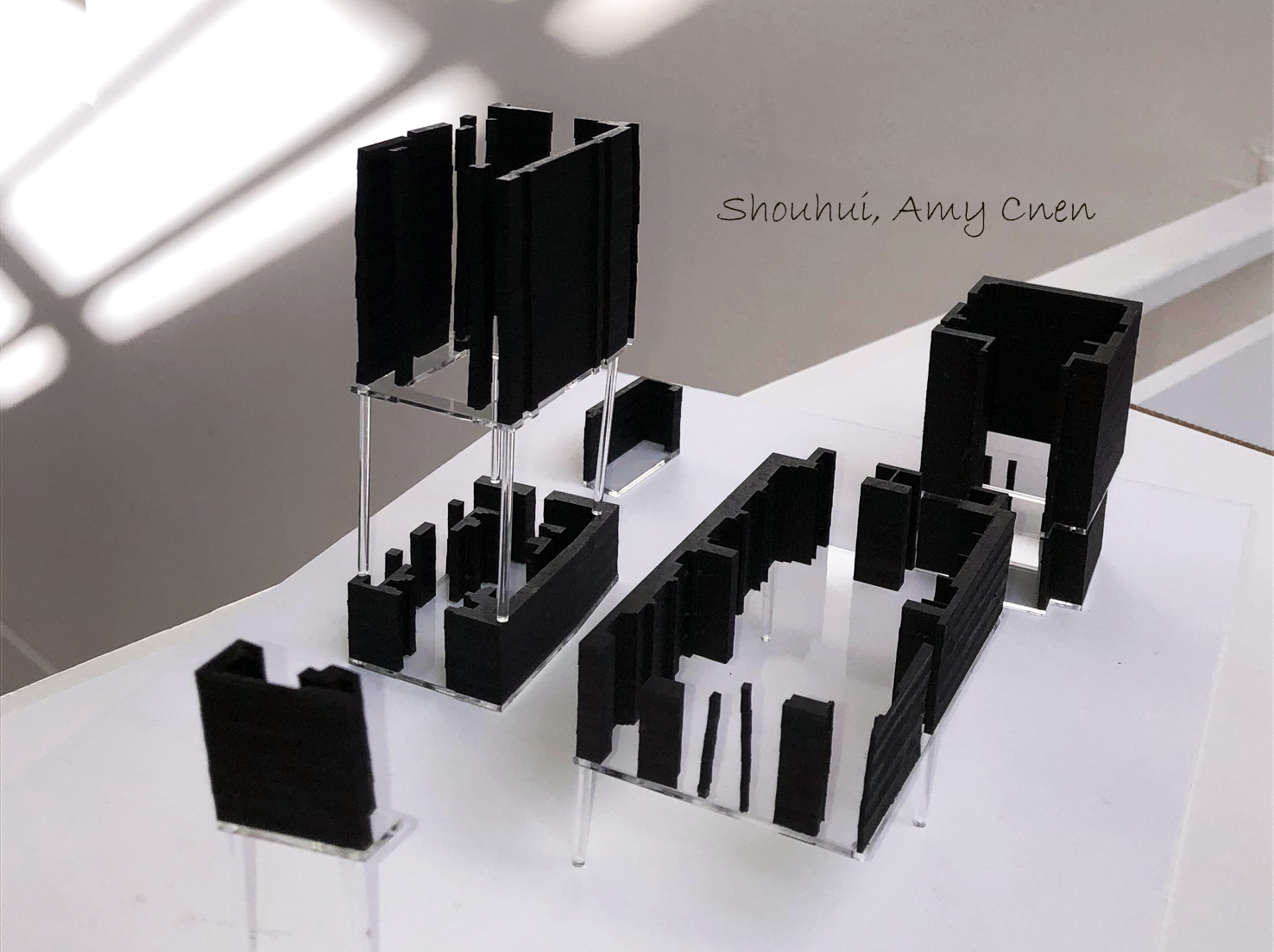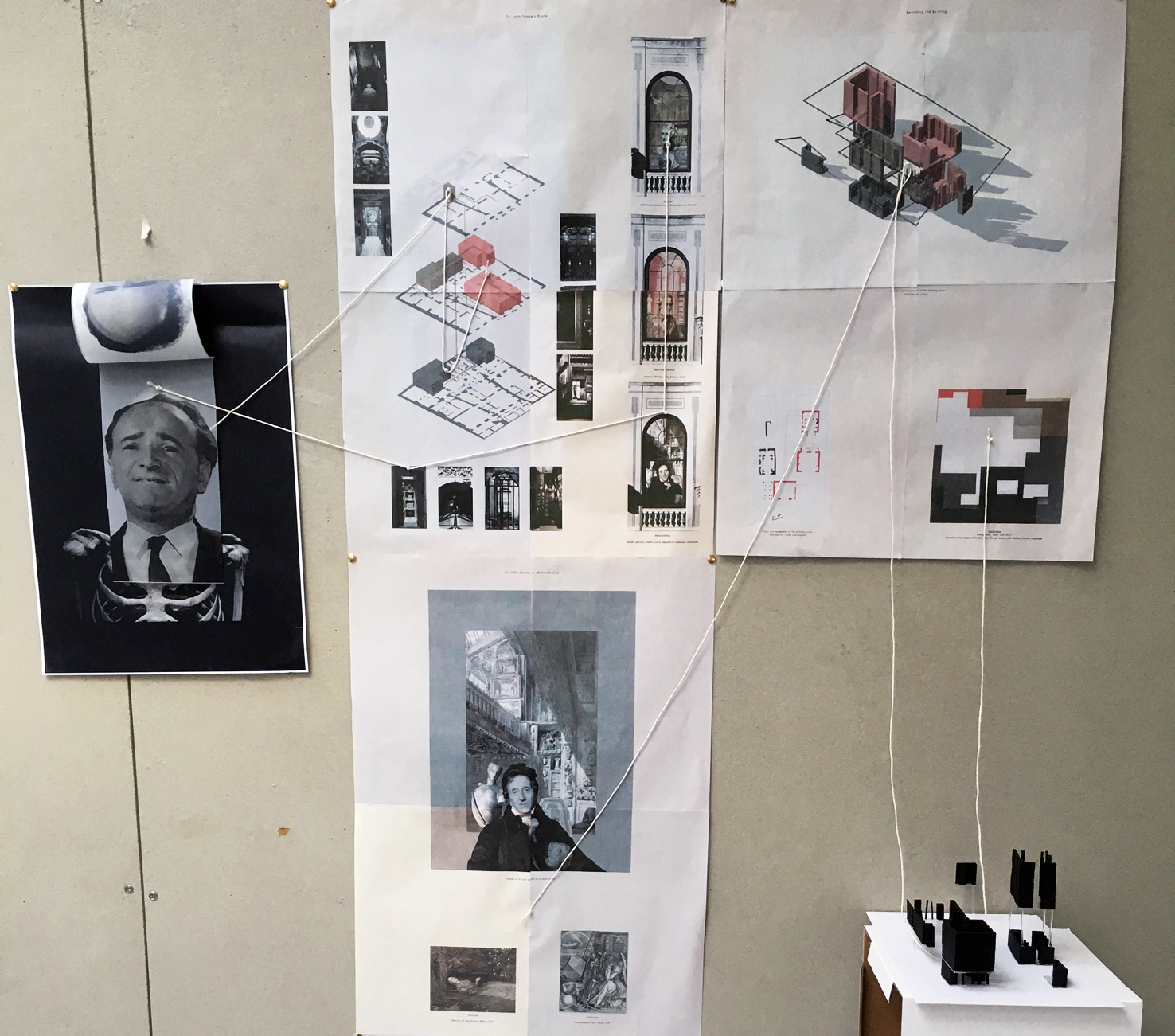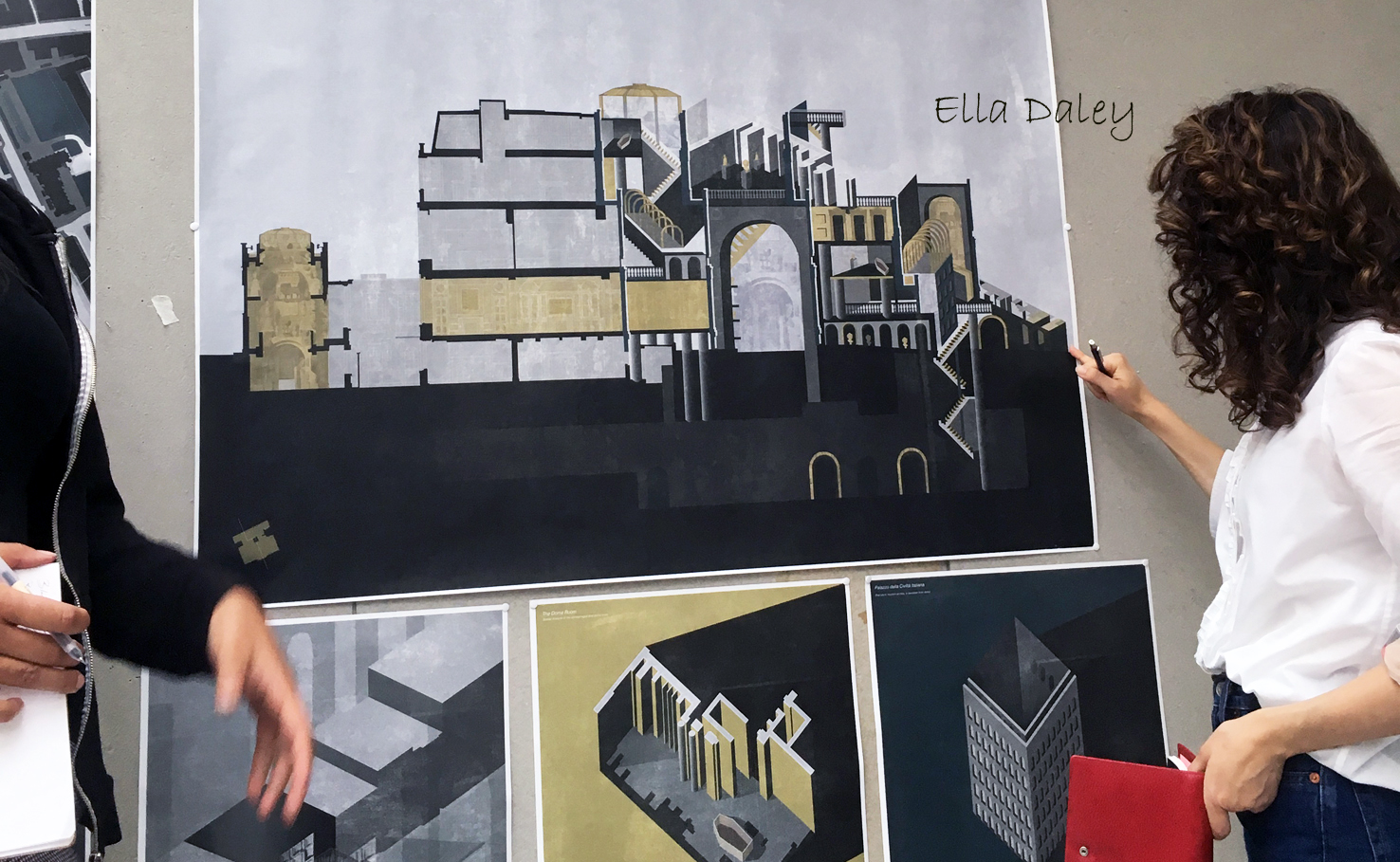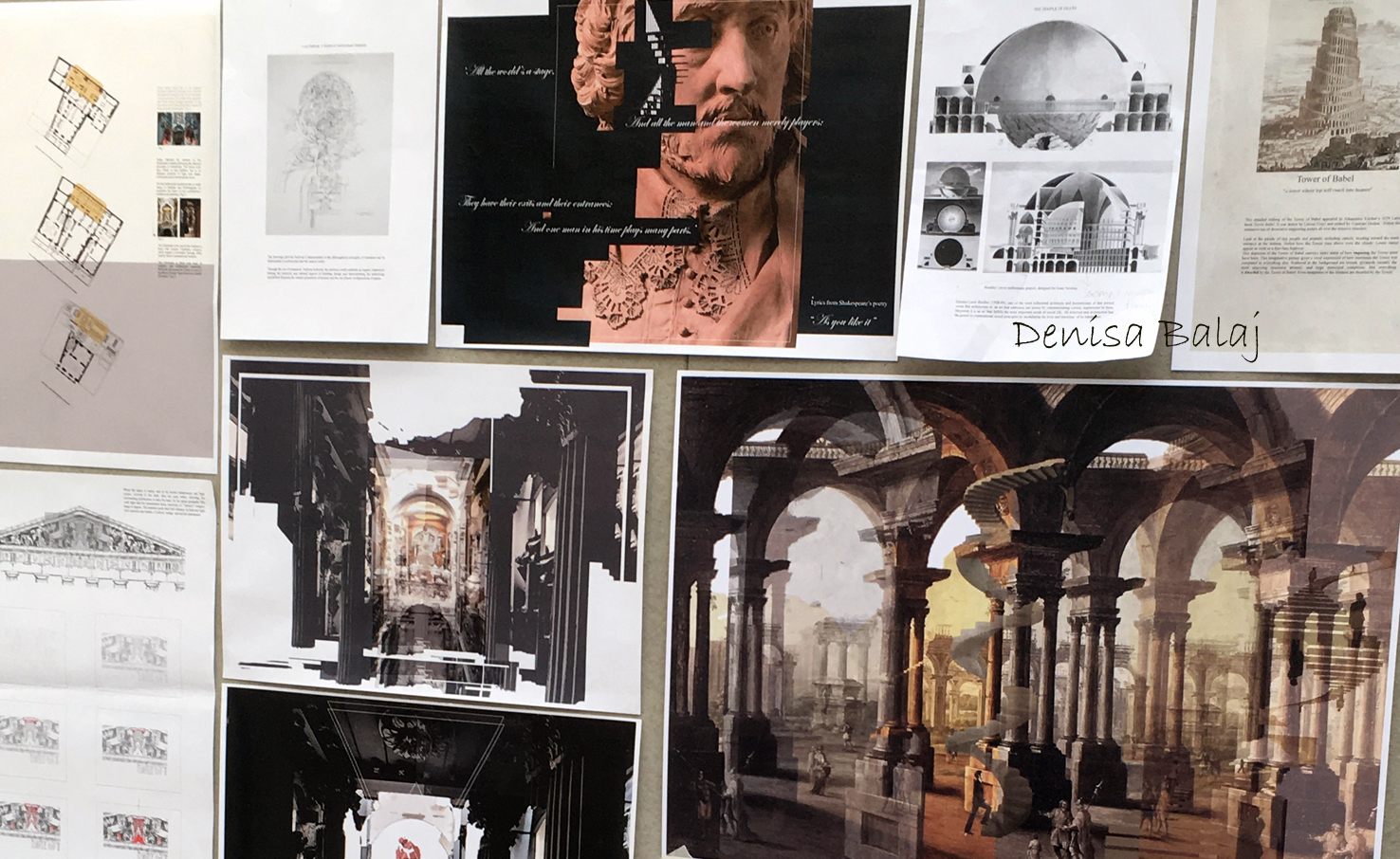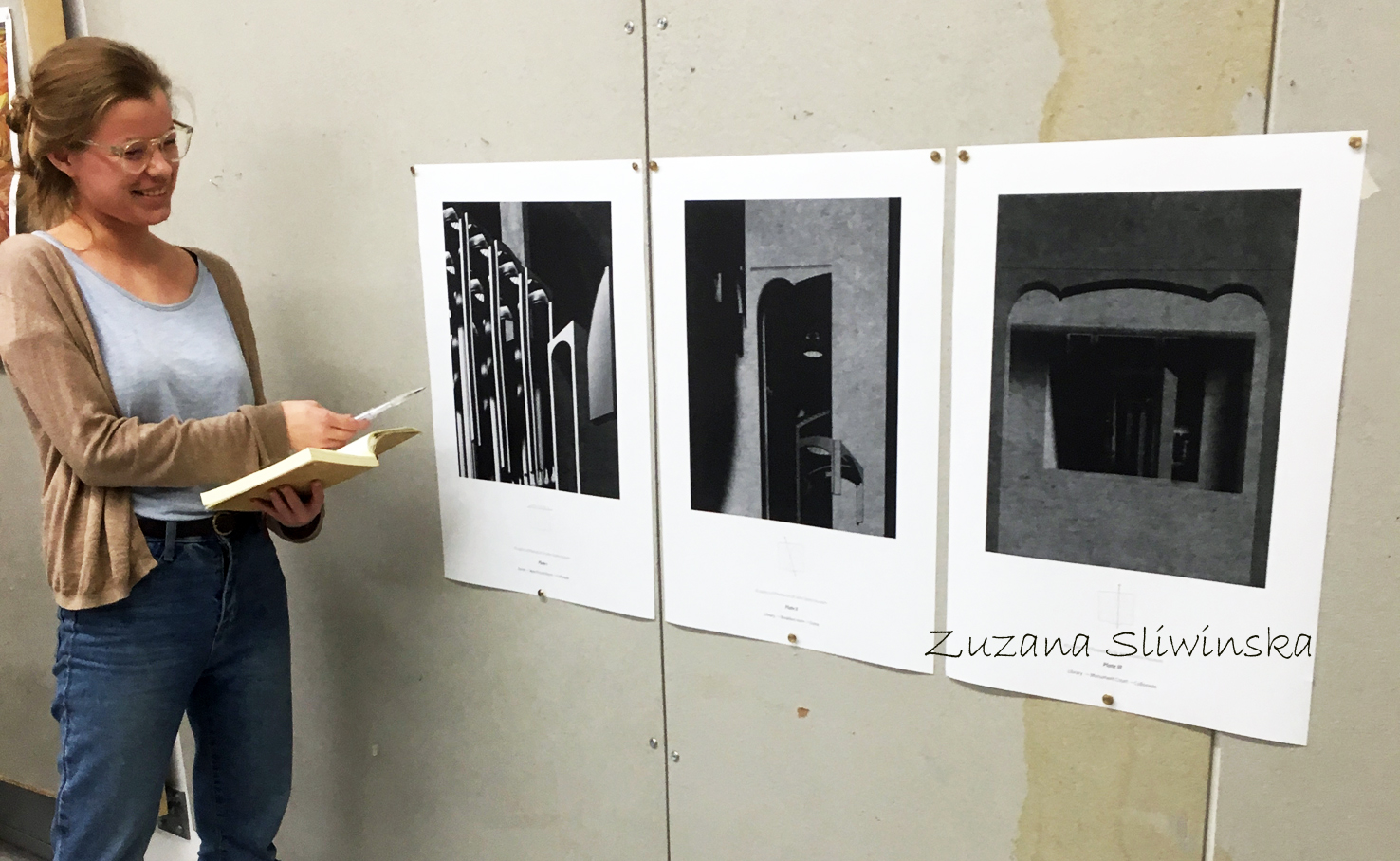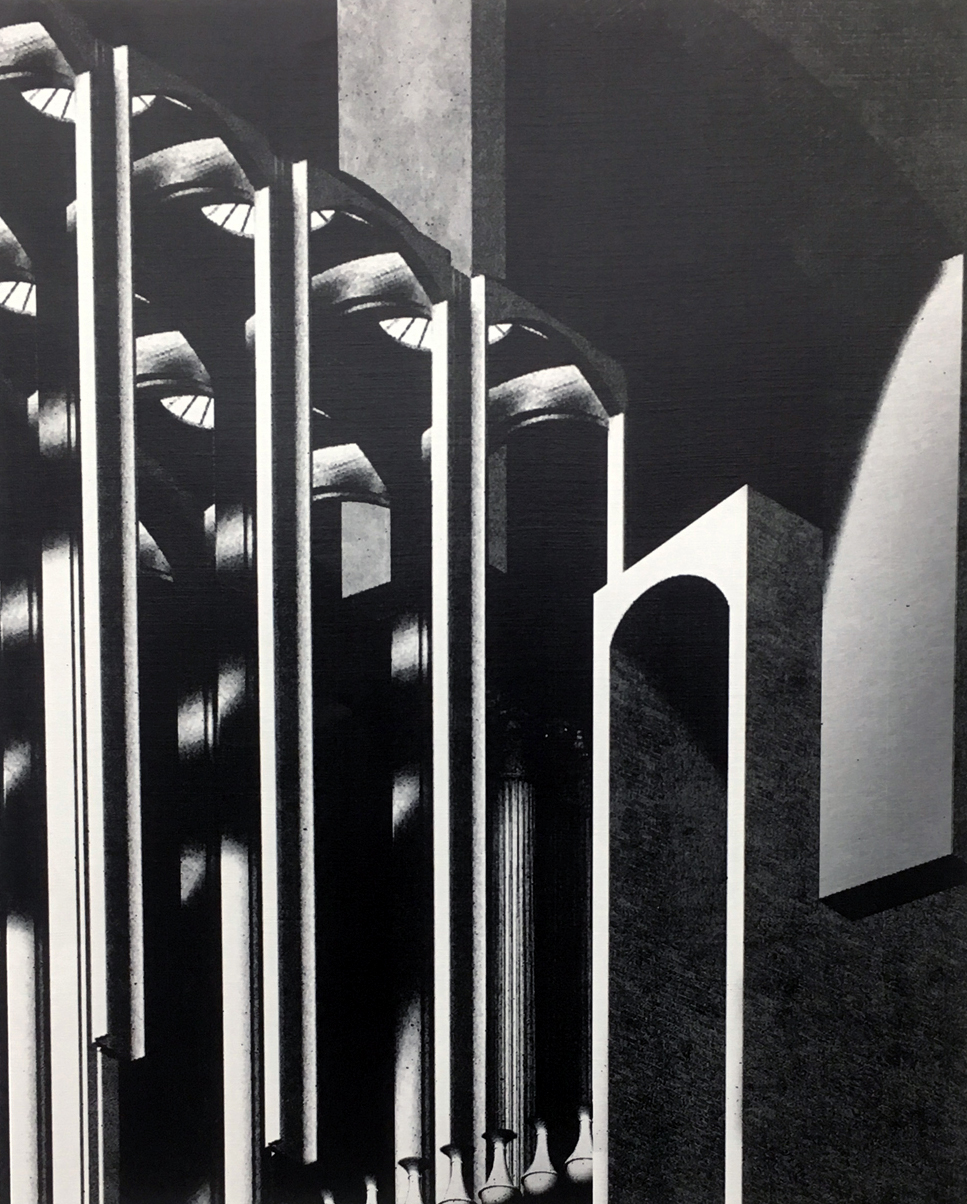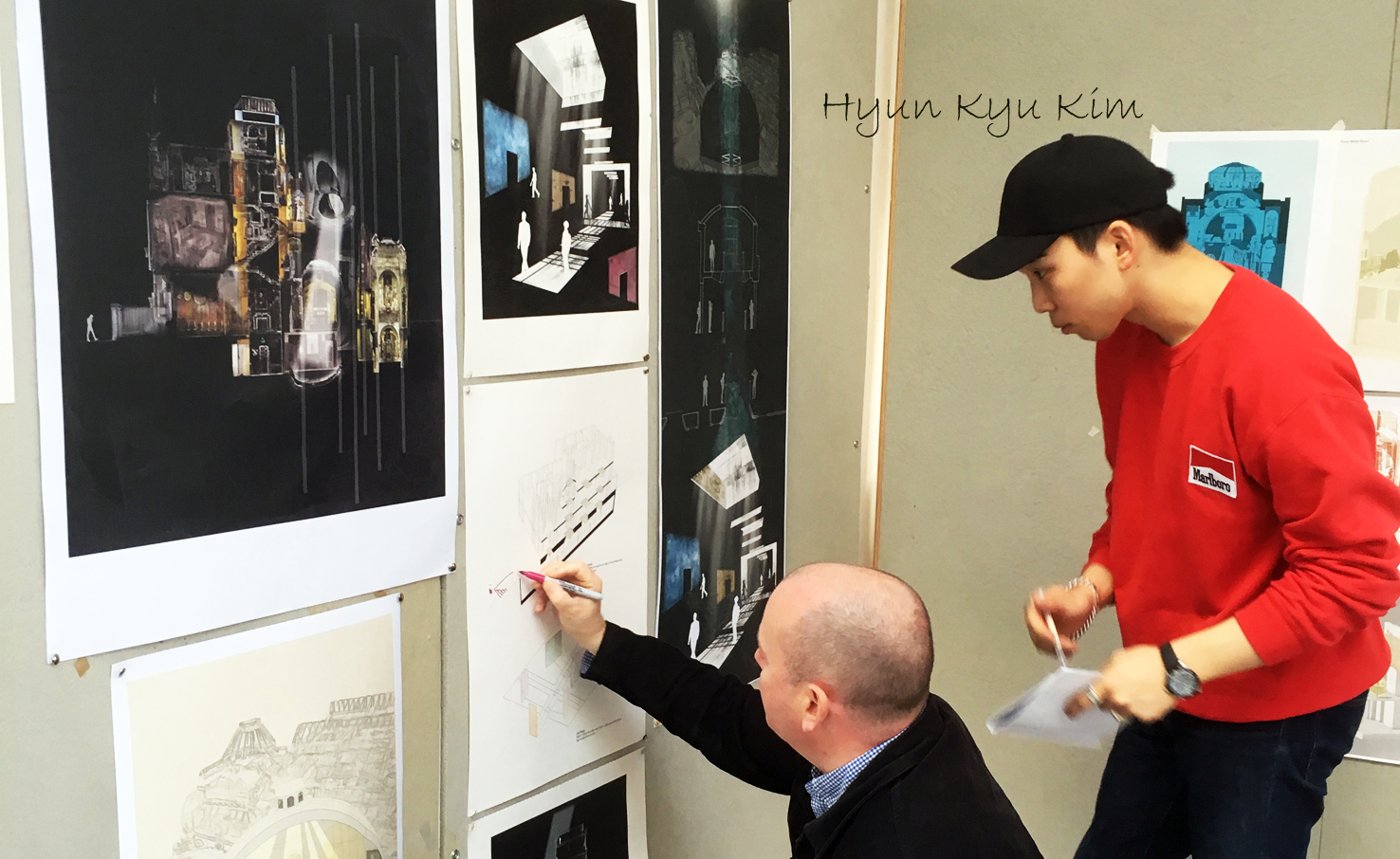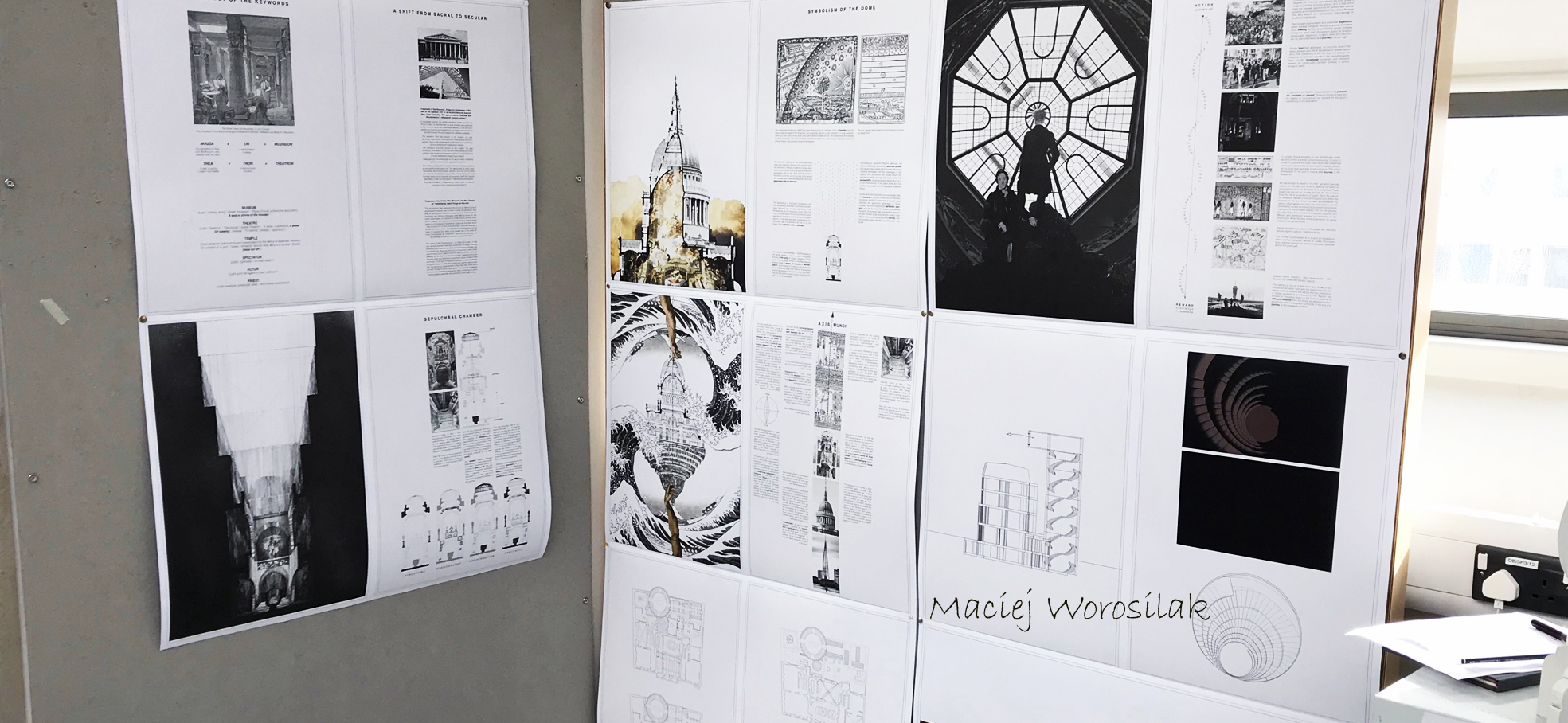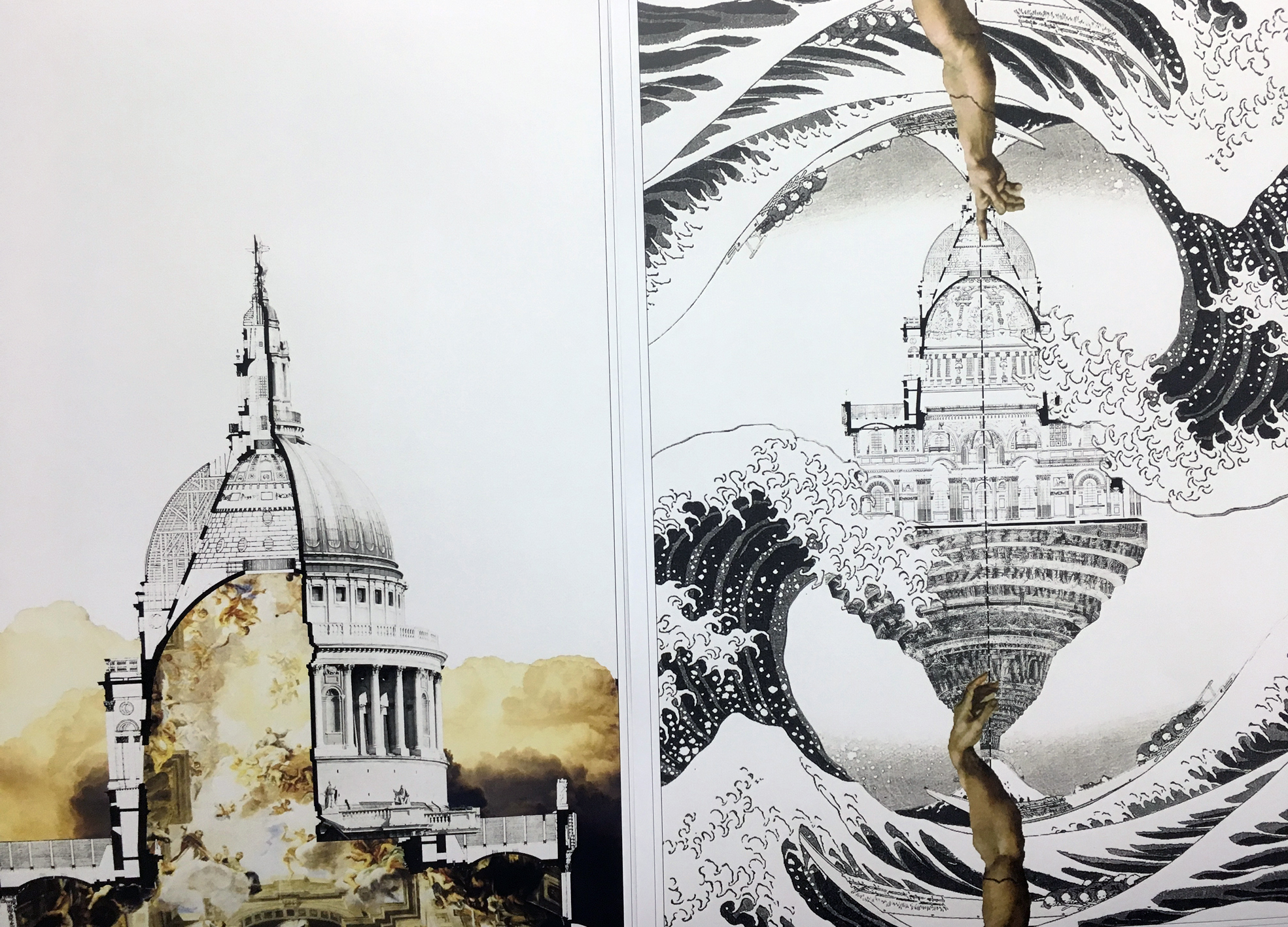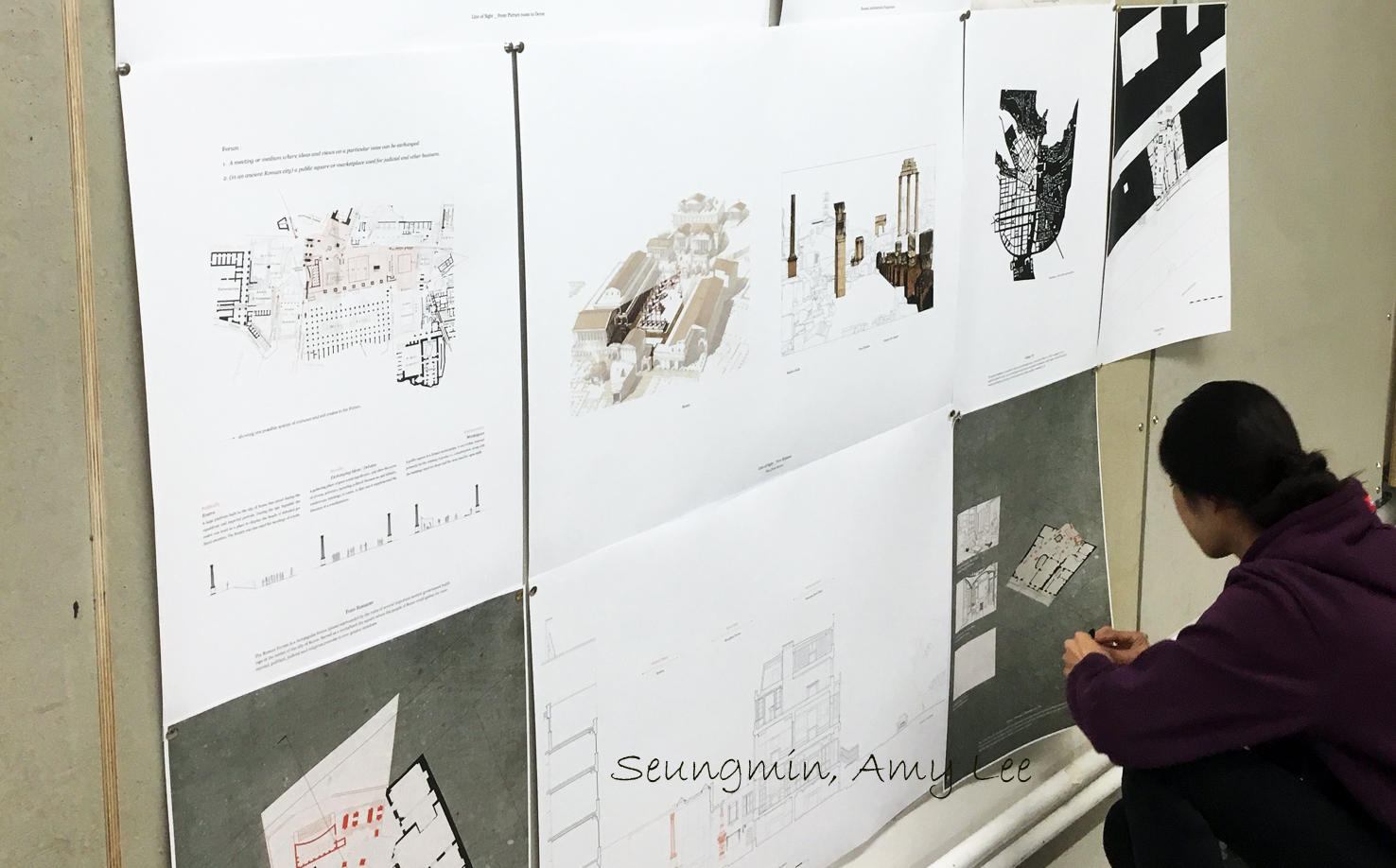Tutors: Constance Lau and Stephen Harty
Constance Lau practices and teaches architecture in London and Singapore. The studio’s research interests in multiple interpretations and narratives are explored through the techniques of montage as well as notions of allegory. Narrative as an ongoing dialogue in architectural design is further articulated through projects in the book Dialogical Designs (2016).
Stephen Harty is an architect and director of Harty and Harty.
Mise-en-Scene: Displacement and the Grand Tour
Sir John Soane’s Museum, London was a residence, a place of learning and a repository for paintings, sculptures and architectural paraphernalia garnered over a lifetime. Much of this was inspired by Soane’s experiences on his Grand Tour during his early years. Hence from the end of the eighteenth-century until his death in 1837, nos. 12 and 13 Lincoln’s Inn Fields were constantly altered to accommodate new functions and acquisitions.
The spaces operated as analytical constructs that created a phantasmagoria of effects with inventive settings staged to reflect new narratives as well as technological advancements in architecture. The resulting theatre and ideas of theatricality could be argued as similar to the sixteenth-century notion of ‘cabinet of curiosities’ where the readings and meanings of the various objects were reliant on their immediate contexts. Hence the experience of the place is not singular, linear nor static.
While conservations efforts have ensured that the Soane Museum retains many of the key qualities, issues of use differ greatly from its inception, during Soane’s lifetime and at present. This can now only be understood through research where user patterns can be reconstructed through markings, and physical alterations to the buildings are able to provide information regarding changes to function and program. The words ‘theatre’ and ‘theatricality’ are used to describe spaces, buildings, activities, experiences and/or atmospheres. These various definitions will now be explored through architectural proposals, focusing on the notion of ‘use’ and the ability of the user to shape the reading of the Soane Museum, and later, the architectural proposal for an ‘archaeological artefact’.
Semester one: The Soane Theatre of ‘Curiosities’
The argument that ‘there is always a history of drawings, objects and buildings within and against which an architectural work can be seen’ is important. This notion of ‘polyphony’, which means ‘many voices’ is firstly explored through Sir John Soane’s Museum. Aldo Rossi’s II Teatro del Mondo (Theatre of the World) for the 1979 Architecture Biennale was designed to reference the eighteenth-century Venetian floating theatres. More importantly, this floating structure could interchangeably serve as a backdrop, a setting, and/or a work of architecture. This idea that a multiplicity of new meanings is created through the ever-changing relationships between program, object and site is key to the design of the Soane Theatre of ‘Curiosities’. Part residence, part museum/gallery, part repository, part theatre, the architectural narrative starts with issues of displacement and display. The design proposal takes on different theatrical effects to evoke the experiential and spatial qualities of a ‘cabinet of curiosity’.
This building is to be designed as an extension of the existing Soane Museum occupying the rear plot, right through onto Whetstone Park, to include an additional new entrance. In addition to the qualities apparent in the existing Soane Museum, design concepts can be furthered through investigating the various definitions of the words ‘theatre’ and ‘theatricality’ as previously mentioned. Hence the experience of architecture is seen as ongoing theoretical and physical responses.
